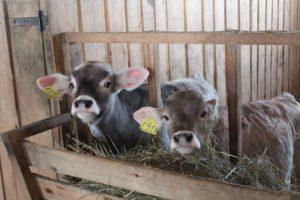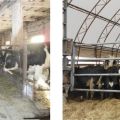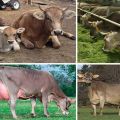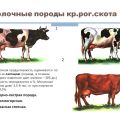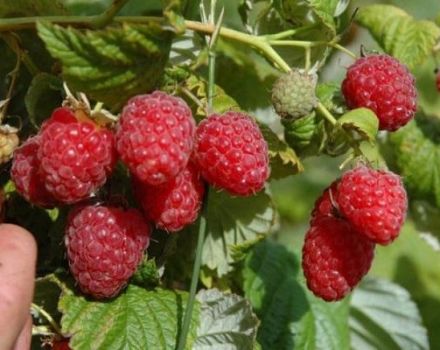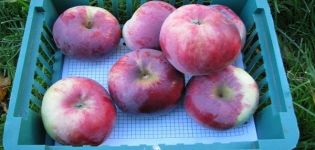Areas of distribution of stall and grazing livestock, especially
Stall keeping of cattle is used if it is impossible for the animals to organize grazing, in the absence of pastures or a significant number of livestock on the farm. It is typical for suburban farms; The proximity to the city, the abundance of transport, the lack of free sites leave farmers one way out - to equip the animals with a high-tech complex so that the constant stay in the room does not affect health and productivity.
General information on stables and grazing
Stable housing - when the livestock of cattle is constantly in the barn, receives ready-made feed (including fresh grass), and in order to save the animals from problems due to lack of movement, only walking areas are used.
If animals are driven out to pasture every day, where they independently find green mass, the maintenance is called pasture. For pastures, flat areas with high grass stands are selected. Nearby (at a distance of no more than 1-2 kilometers), a reservoir should be located so that animals have access to water. If there is no reservoir nearby, wells and drinking bowls for livestock are equipped.
Grazing is significantly healthier for the animals than the stall option and cheaper for the farmer. Cows do not suffer from lack of physical activity, they acquire strong immunity. However, today there are less and less free spaces for free grazing. Areas of distribution of grazing cattle - Lower Volga region, Kalmykia, Rostov region.
Important: irrational use of pastures, trampling of territories, pollution of river banks and lakes with animal waste products, lack of proper water purification can lead to desertification of habitual grazing areas. Therefore, modern highly mechanized large livestock complexes presuppose stall keeping of cows.
Pros and cons
Keeping cows in a stall is convenient when the number of livestock is high; automation of the processes makes it easier to care for the animals.
If the complex is large, and farmers save on treatment facilities, there is a problem of contamination of the surrounding areas and a constant unpleasant smell.
Room requirements
Stable housing of cows is divided into tethered and loose systems. With a harness system, each cow is in a separate stall, 1.8-2.0 meters long and 1.0-1.2 meters wide. The animal is secured with a chain, feeders and drinkers are equipped in the front part, and a system for manure removal is located at the back. Stall sizes vary according to animal age, breed and gender. For bulls and pregnant cows, more spacious paddocks are provided. Stalls are placed in a row, adjacent rows are united by a feed or manure passage.
Equipped with solid or slatted floors with a slope of 2-3 °. Windows and doors are insulated so that there are no drafts. In the barn, with a large number of animals, a centralized water supply is mandatory. Animals need free access to water. If there are few animals, individual drinkers and feeders are equipped. With a significant number of livestock, the feed distribution process is automated.

The walking area is equipped next to the barn building, it is fenced off, if necessary, a canopy is made. The site should be protected from the wind, for each animal on the walk there should be 15-16 square meters of area.
Loose housing requires a large barn area. In this case, the cows move freely throughout the day, for milking they come to a special hall with equipment.
To train the cows to come to milking, they are given hay and mineral supplements during the process. Milking at the same time, animals quickly get used to the regime. Animals rest on a deep bed of straw and sawdust, or boxes are equipped like stalls, in which the livestock is located. To avoid clashes in groups of animals, cows are divided into groups by age, sex, period of hunting and pregnancy.
Sanitary requirements for keeping cows
The complex for keeping cattle should include: a room for storing feed, a cowshed, a walking area. Animals are provided with quality food, clean, without signs of mold and decay. The water in the drinking bowls is not lower than + 12 ° С, it must be clean and meet sanitary standards. Mandatory daily (preferably 2 times a day) cleaning of manure indoors.
It is necessary to walk the animals daily, they must walk at least 1.5-2 kilometers. Walking areas are equipped with a durable coating (concrete, asphalt), which should be systematically cleaned, snow and ice removed in winter.
Drinkers and feeders are systematically cleaned of feed residues, treated with 2% hot baking soda solution. Animals must be examined by a veterinarian. If a disease is detected, the cow must be isolated from the rest of the livestock and treated. In case of infectious diseases on the farm, quarantine measures are mandatory.
Optimal water supply for dairy cows in pasture
In a barn with a large number of animals, a water supply is required. Novice farmers often install a metal water tank indoors and refill it as needed. Usually, farmers use a pasture-stall system for keeping cows. In summer, animals are in the pasture, in winter - in stalls. This ensures high productivity of animals, protects against diseases of the legs of cows. Since the animals need access to clean water, an area near a stream or river is selected for pasture.Animals should not be fed from ponds, water should be running.
The area where animals are watered is fenced off and a comfortable gentle slope is made so that the cows do not injure their legs. The coastal area should be systematically cleaned of excrement. In hot weather, cows should drink 4-5 times a day. Before equipping a place for drinking animals, water from a reservoir is submitted for analysis to determine its quality.
Stable keeping of animals throughout the year is a necessary measure. This method is convenient, but expensive for the farmer, animals suffer from lack of fresh air and movement. At the slightest opportunity, it should be replaced with a pasture or mixed species.



